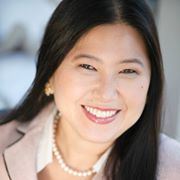Plastic Surgeon Dr. Constance Chen Explains What It Is and When It’s Right
New York, NY (PRWEB) August 15, 2017
For all the joys that motherhood brings, pregnancy can also change a woman’s body in ways that can be physically and emotionally disorienting. “For some women, exercise and weight loss will bring back their pre-pregnancy bodies,” says plastic surgeon Dr. Constance M. Chen. “But sometimes the body has been stretched out so much that it cannot be restored with diet and exercise. The skin loses its elasticity and the abdominal muscles separate in a way that causes physical discomfort and extra stress on the back muscles. The ‘mommy makeover’ is a personalized combination of surgical procedures designed to restore a woman’s body after pregnancy and enhance her physical and emotional health.”
What can a “mommy makeover” correct?
Abdomen: Pregnancy is a significant strain on the body. Carrying a new life in the uterus can cause the abdominal muscles to pull apart, resulting in a rectus diastasis. This separation of the abdominal muscles results in a visible bulge that also puts extra stress on the back, leading to back pain. Unfortunately, no amount of exercise can correct the abdominal bulge and back pain, because the problem is a mechanical separation of the muscles. The only way to correct a rectus diastasis is through rectus plication, in which the rectus abdominis muscles are sewn together in an internal corset to restore the muscles to their original state. In addition, the stretching of the abdominal skin during pregnancy causes it to lose elasticity. The skin has three layers: epidermis, dermis, and subcutaneous fat. When the dermis has been damaged, there will be permanent stretch marks and loose skin that cannot be eliminated by diet and exercise. An abdominoplasty or tummy tuck removes excess skin and stretch marks and also repairs the damaged muscles. The result is a stronger back with tighter core muscles and a flatter stomach.
Breasts: When the breasts engorge with milk, the skin can be stretched out so much that it loses elasticity. After breastfeeding, the excess overstretched breast skin can lead to a sagging breast that appears flat and empty at the top with all the breast tissue at the bottom. Several different procedures may be used to restore the appearance of the breasts:
A mastopexy or breast lift will not change the size of the breasts but will remove the excess skin and reposition the nipple-areola complex higher on the breast mound and/or move the breast tissue itself higher on the chest wall to recreate a perkier breast.
Some women are left with larger breasts even after the milk ducts have involuted. Large breasts may be uncomfortable or cause back, neck or arm pain, headaches, or a rash under the breasts. Reduction mammoplasty or breast reduction removes excess tissue and skin and positions the breast tissue higher on the chest wall.
After the breasts are no longer filled with milk, the breasts may appear smaller than they were before the pregnancy. For women who would like larger breasts, augmentation mammoplasty or breast augmentation places a saline or silicone gel implant under the breast tissue to increase the size of the breast and fill up the upper portion of the breast.
Excess fat: Liposuction can be used along with abdominal and breast procedures to sculpt the final contours by removing additional fat accumulated during pregnancy. Liposuction is useful an adjunct to other procedures to smooth out the contours but it cannot remove excess skin that results from loss of skin elasticity after pregnancy.
“A ‘mommy makeover’ can help a woman feel stronger and more like herself after pregnancy,” says Dr. Chen. “But no one should rush into surgery without careful consideration.” Here are Dr. Chen’s guidelines for deciding when a “mommy makeover” is advisable and will produce the best results:
Be in good health and at your goal weight. Don’t use surgery as a shortcut to weight loss.
Exhaust the possibility of exercise correcting the problem. Don’t use surgery to achieve what can be accomplished with exercise.
It’s best to defer surgery until your family is complete. A subsequent pregnancy can undo the results of a “mommy makeover.”
Have realistic goals and expectations for the outcome of surgery.
Make sure you have the needed support for your recovery period.
“A ‘mommy makeover’ can address some of the changes caused by pregnancy and motherhood,” Dr. Chen concludes. “Along with a healthy lifestyle, restoring a woman’s body after pregnancy can bring back a new mother’s physical and emotional well-being.”
Constance M. Chen, MD, is a board-certified plastic surgeon with special expertise in the use of innovative natural techniques to optimize medical and cosmetic outcomes for women undergoing breast reconstruction. She is Clinical Assistant Professor of Surgery (Plastic Surgery) at Weill Cornell Medical College and Clinical Assistant Professor of Surgery (Plastic Surgery) at Tulane University School of Medicine. She is also Chief of Microsurgery at New York Eye and Ear Infirmary of Mount Sinai. http://www.constancechenmd.com

